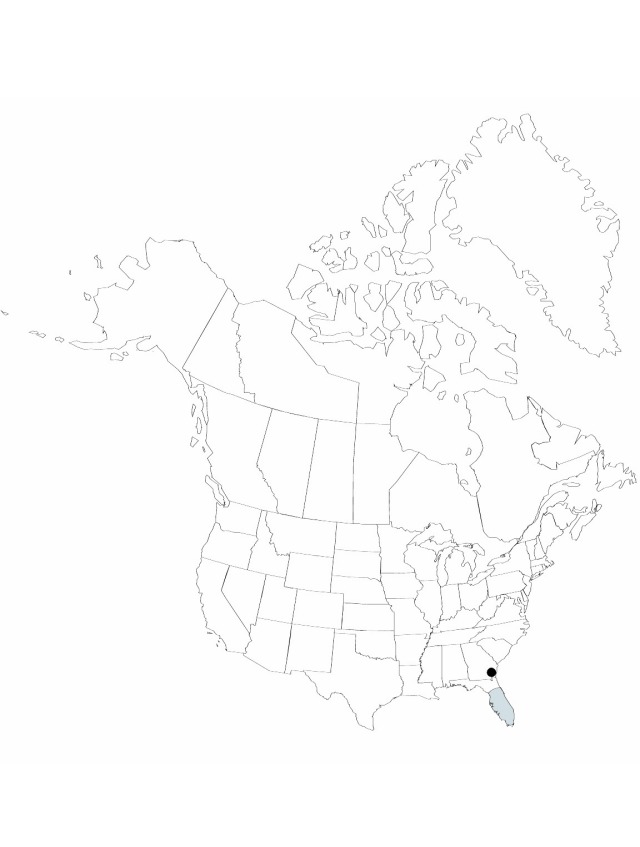Difference between revisions of "Tillandsia setacea"
Flora Indiae Occidentalis 1: 593. 1797.
FNA>Volume Importer |
FNA>Volume Importer |
(No difference)
| |
Revision as of 21:59, 16 December 2019
Plants densely clustering, flowering to 30 cm. Stems short. Leaves 15–30, many-ranked, finely appressed, erect, green to reddish green, 20–30 × 0.1–0.4 cm, uniformly scaly throughout; sheath rust-colored, broadly triangular, flat, not forming pseudobulb, 0.8–1.8 cm wide; blade very narrowly linear-triangular, ribbed, leathery, margins involute, apex filiform-attenuate. Inflorescences: scape conspicuous, erect, 8–15 cm, 2–4 mm diam.; bracts densely imbricate, erect; sheath of bracts, especially upper ones, narrowing abruptly into blade; spikes erect, palmate (rarely simple), linear, compressed, 1–4 × 0.5–0.6 cm, apex acute; branches 1–5. Floral bracts imbricate, erect, green or tinged red, broad (covering all or most of rachis, rachis not visible at anthesis), ovate, keeled only toward apex, 0.8–1.2 cm, thin-leathery, base not visible at anthesis, apex attenuate to acute, surfaces appressed-pale scaly, venation slight. Flowers 3–15, conspicuous; sepals with adaxial pair connate, elliptic, keeled, 0.8–1 cm, thin-leathery, veined, apex acute, surfaces slightly scaly; corolla tubular, petals erect, lavender, ligulate, 1.8–2.2 cm; stamens exserted; stigma exserted, conduplicate-spiral. Fruits 2–3 cm.
Phenology: Flowering spring–fall.
Habitat: Epiphytic on a variety of hosts in swamps and humid forests
Elevation: 0–60 m
Distribution

Fla., Ga., Mexico, West Indies, Central America.
Discussion
It is probable that Mexican and Central American materials represent one or more additional species.
Selected References
None.